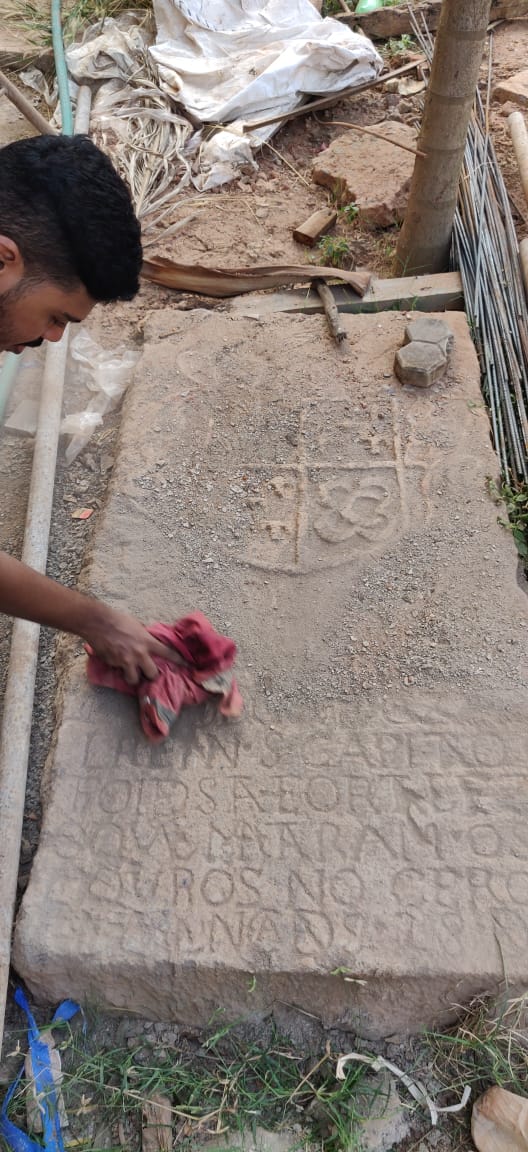Mangaluru: Two inscriptions found in the technology wing of Fisheries College, Mangaluru reveal interesting information though they are heavily worn out due to time. While one inscription is in Portuguese seemingly a tombstone of a Portuguese captain, the other is in Kannada belonging to the Alupa era indicating a grant to keep the lamp lit perpetually.
A week back, a student at the college brought to the notice of Professor and Dean of Fisheries College, Senthil Vel about inscribed stones found during the construction works for the smart city. Vel took it to the notice of the Prime Minister's office and the Archaeological Survey of India (ASI) was tasked to examine the stones.
Read: Rakesh Tikait urges Karnataka farmers to be ready to lay siege
The inscription in Portuguese was translated by a language scholar which read that 'This grave belongs to António [probably Teixeira] de Macedo Nobleman from His Lordship the King's House. Captain from this fortress, who killed the moors in the siege, [1] 528 (or 1628 or 1728) AD (means Anno Domini the year of the Lord)'. The year is not clear though.

It is evident that the captain was also killed in the skirmish with the moors and his mortal remains were laid to rest in the fortress.
Mangalore was a thriving port city for ages passing from one to another starting from the Mauryan empire to British colonial rulers before independence. It was a prominent port exporting rice, betal nuts and spices to the Middle East during those days.
Portuguese interest in Mangalore has begun with the arrival of Vasco-Da-Gama in 1498 AD. They were in direct loggerheads with the Arabian traders who have been enjoying their trading rights for many centuries. The Portuguese managed to capture Mangalore in 1526 AD but they were always at war with local rulers backed by Arab and Muslim rulers.
Read: Usain Bolt of Kambala, Srinivasa Gowda creates new record
The second inscription in Kannada is highly damaged and worn out and whatever the archaeologists managed to decipher reveal the gift of 100 gold coins.
According to Senthil Vel, the slab has Kannada language and characters of 12 – 13 th century CE. Several lines in the slab have been damaged and have been worn out. ASI has interpreted from the existing script that it is a record of a gift of 100 gadeyana, which means 100 gold coins. These gold coins have been initially given to some person for lighting a lamp perpetually. The lamp is being lit to act as a lighthouse as the area where it has been found is a trading port (presently Old Mangaluru Port). Such a lamp that is perpetually lit can also be an indication of a temple. The rulers during those days were the Alupa dynasty in South Canara, he stated.

The Alupas, the local rulers and feudatories to regional empires like Chalukyas, Rastrakudas and Hoysalas, ruled from the middle of the seventh century to the 14th century.


